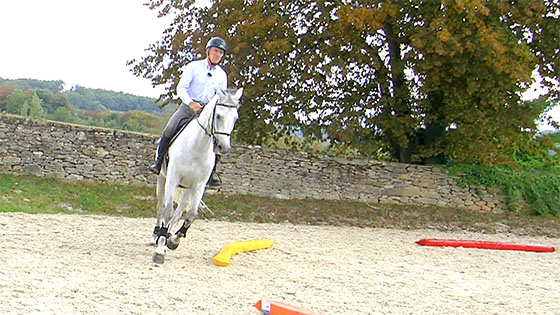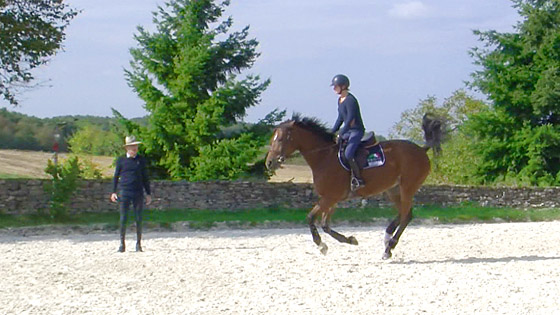Accuracy of the track and suppleness of the horse – Step 2

This second part of the exercise is to be done at a canter with a horse well-schooled and responding perfectly to the leg and hand aids. The rider will have to be demanding to be in a perfect control of the 4 feet of the horse.
his second part of the exercise is quite difficult and can be achieved only if both the rider and horse master it at the walk and the trot. This is the reason why the rider has to take his time to practise the exercise and can practise it over several sessions. To be successful practising the exercise at a canter, the horse needs to be available and the rider needs to anticipate and plan ahead correctly. The goal is to keep some light and discreet aids. Therefore if the rider has to flail, twist himself, pull or push, or even if he needs to use strength, there is no point in practising this exercise yet. So it is necessary to achieve one step at a time at the lower gaits before trying it at the canter.
This exercise is linked to the sheet A7 of the Training Program 1
Michel recommends to start with the most comfortable side for the horse. As seen in the first part of the exercise at a walk and trot, the rider has to be active on the right and then his left side staying centred and symmetrical in his position.
Michel offers some modifications of the set-up to make the first few practices easier and to gather some positive results before increasing the level of difficulty.
Michel gives us also an insight on the mind set we are looking for in the horse and the rider to reach the maximum relaxation while keeping the canter rhythm steady.
At the end, you will notice how comprehensive this exercise is. It will take you a certain time to get it, but you will definitively notice the progress you and your horse will make. Practise well!

